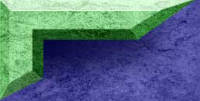Introduction
A dwarf is characterized of someone who is of 4' 10" and less in height as an adult. There are more than
200 conditions that cause Dwarfism. Of these 200 different conditions 70% of people with dwarfism get it from Achondroplasia.
1 in 25,000 people can get this disorder. It is not a disease and people with it can live very long and normal lives (2008,
Feb. 25).
What is Dwarfism?
As stated above dwarfism is a disorder where the person is of a height of 4' 10" or less. Most people with
dwarfism range in height from 2' 8" to 4' 8" (2007, Aug. 27). People with dwarfism have a shorter than normal skeletal growth.
Majority of the people born with dwarfism have regular sized parents. In majority of cases it is caused by a genetic disorder.
People with dwarfism also have a normal intelligence level and go to school, marry, and have children. One of the biggest
things to remember is they do not like to be called midgets but they often refer to themselves as little people or dwarfs.
What Causes Dwarfism?
Dwarfism is a genetic disorder in most cases. The most common cause is a genetic mutation in the sperm or
egg prior to conception. This is the most common way with normal sized parents. "The growth of an individual depends on regulation
of cell size and cell divisions. Dysfunction of these regulatory pathways not only results in somatic undergrowth..." (Delaval,
Benedicte).
Most common among dwarfs having children is passing the mutated gene to their child. However, they can pass
the normal gene to their child and they can have children of normal size. "When both parents have Achondroplasia, their offspring
stand the chance of having an especially severe form of the disease that is fatal within a few days of birth" (Franklin, D.).
Some other casues of dwarfism can also be metabolic and hormonal disorders in infancy and childhood, chromosomal
abnormalities, pituitary gland disorders, absorptive problems, and kidney disease (Nicholson, L.).
What Are The Symptoms and Complications?
According to mayoclinic.com the characteristic features of the skull, spine, and limbs result in the most
common problems. These complications can be:
- Delays in motor skills development
- Frequent ear infections and risk of hearing loss
- Bowing of legs
- Difficulty breathing during sleep
- Pressure on the spinal cord at the base of the skull
- Crowded teeth
- Progressive severe hunching
- Arthritis in adulthood
Another complication is pregnancy. People who have dwarfism can become pregant but can experience respiratory
problems. They also most of the time have to undergo a C-Section because the pelvis isn't large enough for the baby to come
through. "Difficulties with airway management, regional anaesthesia, altered anatomy and the well-documented
anaesthetic risks of acid aspiration encountered during the third trimester of pregnancy can create a significant challenge
to short stature and contracted pelvis, the obstetrician planned to deliver the baby by Caesarean section
48 h after the initial steroid dose" (Palomero, M A).

